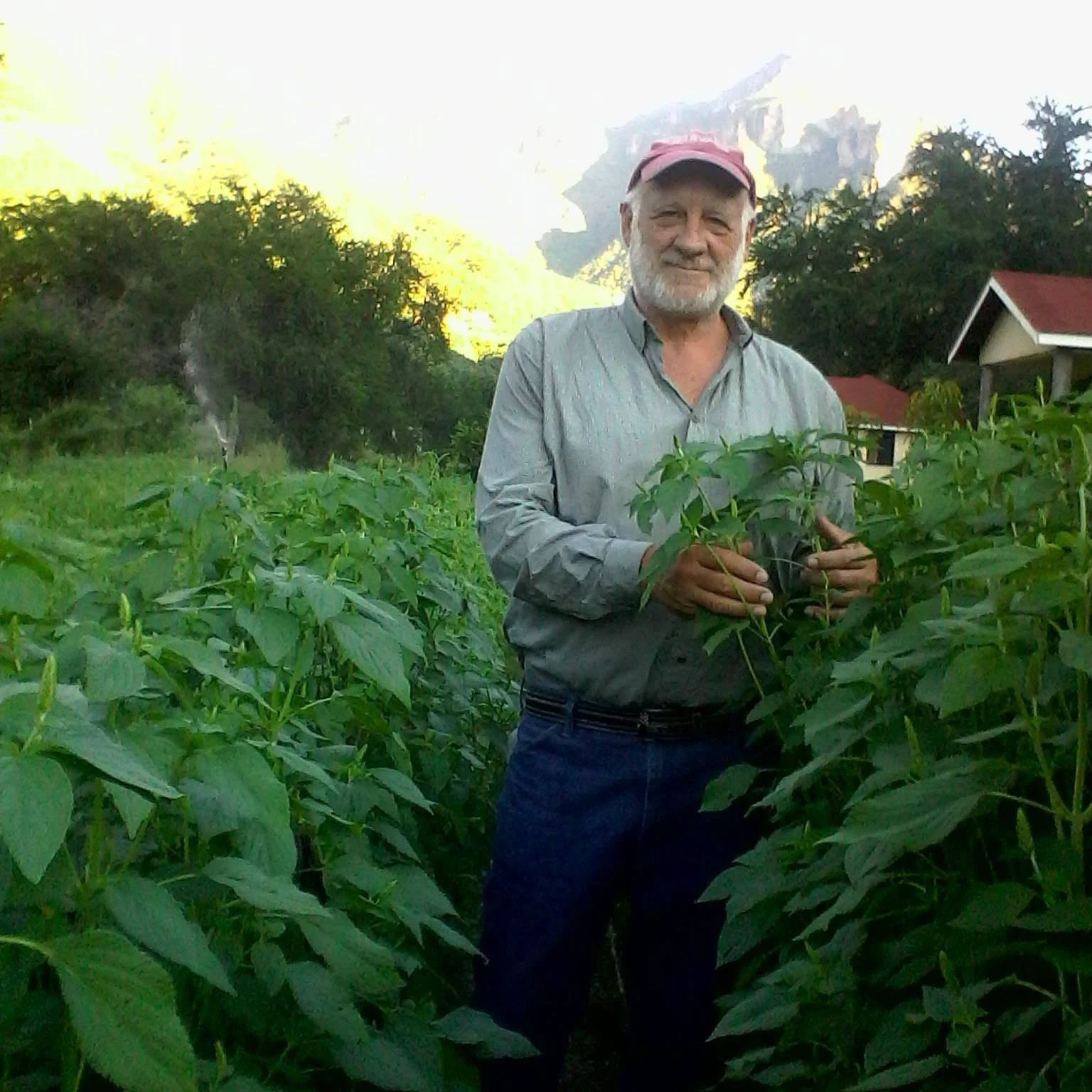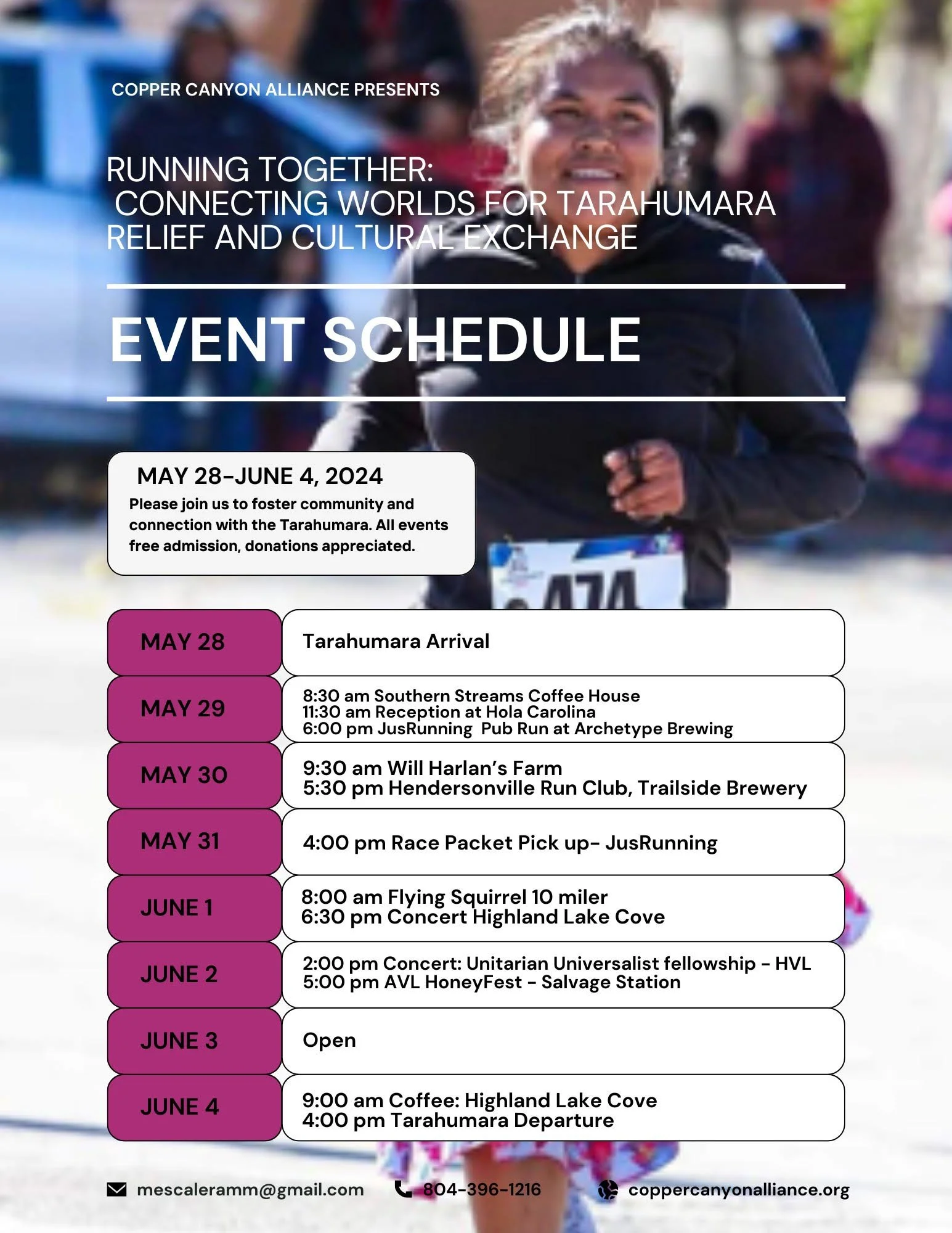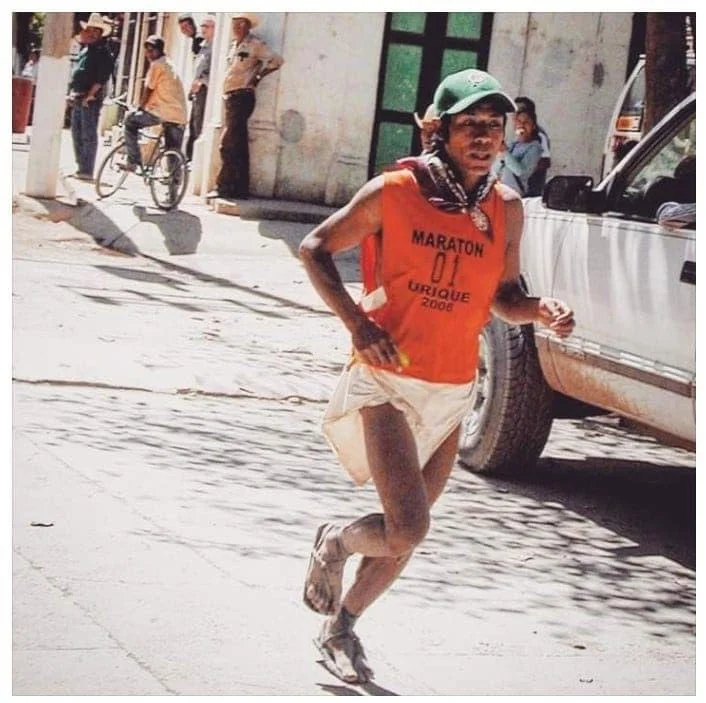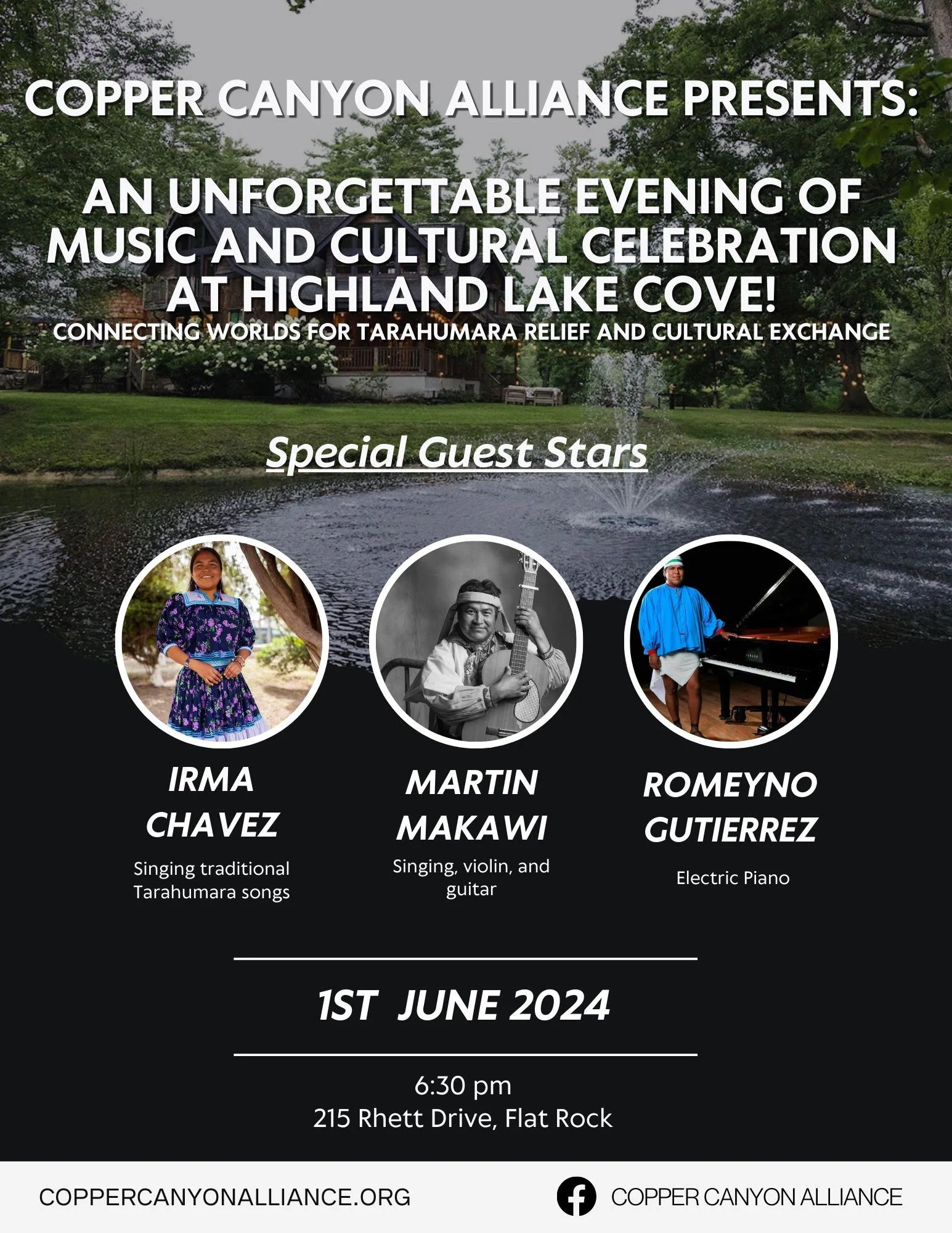A Long Walk to Recovery
/On Saturday, June 1st, representatives of the indigenous Tarahumara people of northern Mexico will be performing in a benefit concert at Highland Lake Cove in Flat Rock to help relief efforts for a people that have been stricken by a devasting drought during the past year.
This is the story of how their ancient culture came to be connected with Henderson County.
Mickey Mahaffey
A Long Walk to Recovery
In the summer of 2018, Mickey Mahaffey was in the rugged canyon lands of northern Mexico and living among the indigenous people known as the Tarahumara. He had been visiting and living with the Tarahumara for nearly two decades and he had become an important link between the native American people and curious academics and filmmakers wishing to learn more about their culture, customs, and extraordinary physical endurance.
On a hot July day, Mickey set out on a 20-minute walk to visit nearby Tarahumara friends. Along the way, however, he began to experience tremendous back and chest pain and started vomiting. He collapsed on the ground but struggled back to his feet and staggered towards his destination.
Mickey Mahaffey, age 65, was having a heart attack in one of the most remote parts of Mexico.
Mickey managed to get to his friends’ house and immediately collapsed on their bed. Although his friends didn’t understand what was happening to Mickey, they understood he needed immediate medical attention. There was a problem, however. They were hours away from the nearest facility that could assist Mickey, and no one in that remote part of the world had a vehicle to transport him.
As Mickey lay on the bed, he reconciled himself to the fact that he was going to die. Then two women showed up with a wheelbarrow. They put blankets in the bed of a wheelbarrow and the men lifted Mickey into the primitive means of transportation. The men then proceeded to run/roll Mickey for 45 minutes on a dirt road to a nearby airfield. Along the way, the women ran alongside the wheelbarrow to hold a blanket above Mickey to block the blazing summer sun.
Not surprisingly, there was no plane when the entourage reached the isolated airstrip. But there was an old truck. None of the group trying to save Mickey knew how to drive, but one man volunteered and, with some coaching from the desperately ill Mickey, managed to drive the truck for 3 hours on a bumpy dirt road to the closest medical clinic.
At the indigenous hospital, the staff managed to stabilize Mickey. After a few days, they transferred him for further care at Chihuahua City where he continued his recovery.
Weeks later, after Mickey had returned to his home in Asheville, he took the EKG to a cardiologist who looked at the printout and just shook his head. “I don’t know how you survived this,” said the doctor. When Mickey explained the story of his dramatic rescue, the doctor surmised that all the bumping and jostling on the dirt roads probably kept Mickey’s heart functioning just enough to survive the hours-long ordeal.
Mickey Mahaffey was a medical miracle.
That miracle was made possible by the fact that Mickey’s friends, the indigenous Tarahumara people, have lived for centuries on the steep slopes of the Copper Canyon region of Mexico and are world-renowned for their incredible feats of physical endurance. If anyone was going to be able to save Mickey Mahaffey that summer day, it was the Tarahumara.
--
Six years later, Mickey Mahaffey is back in his hometown of Hendersonville, NC and has organized a trip for six members of the Tarahumara community to travel to western North Carolina to share their music, their culture, and their stories of incredible endurance. They also come to raise awareness of the cultural and environmental threats to their centuries-old way of life. It is Mickey’s hope that the people who encounter the Tarahumara ambassadors will come to appreciate the fact that even people who live in remarkable simplicity, can still live abundant lives – with our help.
Mickey’s Story
After a lifetime of traveling, Mickey Mahaffey, age 71, has returned to his hometown of Hendersonville to care for his 93-year-old mother. He is a 1971 graduate of Hendersonville High School and attended Gardner Webb College where he earned a degree in English. Following college, he spent a few years doing informal biblical research in the original Greek. He shared his knowledge in churches and private homes but never accepted payment for his teaching. Instead, he worked construction to support himself.
MIckey with his Mother
For the next 20 years, Mickey tried to build a conventional life. He married and had three children. He also started his own construction company. The conventions of a traditional life, however, did not fit well with Mickey’s unique spirit. He also began suffering from rheumatoid arthritis which left him in great pain. His two marriages ended in divorce. In turn, the physical and emotional challenges of life led to serious bouts of depression. At times, it felt as if his life was coming apart at the seams.
Mickey Mahaffey needed a dramatic change.
The first step towards that change came in 1996 when Mickey met an iconic figure who would change the trajectory of his life. Camper Dave was a long-distance walker proficient at living off the land during his travels and he invited Mickey to walk with him along the length of the Outer Banks. Intrigued, Mickey accepted the invitation and the two sojourners ended up walking all the way to Richmond, Virginai - a journey of 400 miles.
Mickey was hooked. “Camper Dave had been like this for years. He was my guide on how to live this way,” explains Mickey. The pair parted ways in Richmond and Mickey struck out on his own – walking back to his adopted home of Asheville. Months after leaving on his first walking adventure, Mickey returned to western North Carolina a changed man – physically stronger, experiencing less pain, and stepping out of the darkness of depression that had haunted him in recent years.
The odyssey transformed Mickey. “After that, I knew that's how I wanted to live,” says Mickey. Long before Fitbits and our current cultural obsession with counting our daily steps, Mickey Mahaffey began walking everywhere he needed to go – and he never stopped.
Home-Free
No longer willing to accept the trappings of a traditional life, Mickey started living outdoors in a lifestyle he calls, “home-free.” “I didn’t like to be referred to as homeless,” he explains. Asheville became his base camp as his walking forays took him all over western North Carolina and eventually into other states and as far north as Canada. All the time, he was getting stronger physically and emotionally. “Walking and living in the natural world basically healed me,” says Mickey.
During his home-free existence, Mickey advocated for the homeless in Asheville, speaking on their behalf before the Asheville City Council many times. In 2001, he ran for Mayor of Asheville to elevate his platform as a spokesman for the homeless and received exactly 1000 votes. “That really shocked the establishment,” he says with a smile.
During this home-free period, he also collected trash in downtown Asheville as his way of giving back to the community since he was not paying anything in taxes. He also wrote occasionally for Mountain Express. Throughout it all, he discovered that not only could he survive - but in many ways, his life had never been better.
Mickey reflects on his time living outdoors.
Sometimes it was very difficult. Mainly challenges from the weather. I stayed out all year round and I camped many, many weeks in snow. But I loved it. The more extreme the weather, the more I responded to it.
It inspired me. For one thing, I was relatively free of pain. So, I was loving that. And I was loving what I was learning as far as being truly intimately connected to nature. Life slowed down for me. My connection with the natural world was just incredible. The animals that I saw and all the plants, all the trees, learning about how to forage, what I could eat. Everything I could need.
I was kind of like Forrest Gump. Once I started walking, I didn't want to quit. I would walk every day for two or three weeks and just sleep wherever I ended up at the end of the day.
I found out that the more I was willing to live that way, the more abundant life became for me.
Despite his unconventional lifestyle, Mickey was able to stay close with his children. “They were very supportive,” recalls Mickey. “When they were in high school, they thought it was pretty romantic that I was living that way. They loved telling their friends about me.” His oldest son, Andy, and daughter, Stephanie, even spent one summer with their father, walking all over New England and into Canada.
Walking to Recovery – Mexico
Copper Canyon
In 1999, Mickey set out on a leisurely walk - to visit Honduras in Central America. Along the way, however, he encountered the indigenous Tarahumara people who live in north central Mexico. The Tarahumara live primarily in Copper Canyon which is actually a series of seven of the deepest canyons in the world.
Mickey was immediately drawn to the simplicity of their ancient lifestyle and its synchronicity with his approach to life. “They have very few material possessions. They live from what they can grow. And because they walk everywhere, they have a strong connection to nature.” In a sense, Mickey Mahaffey had found his people.
Mickey soon learned that the Tarahumara have incredible physical endurance for both long-distance running and dancing. Their physical exploits are so well-regarded that they have been the subject of books – including the 2009 best-seller, Born to Run: A Hidden Tribe, Superathletes, and the Greatest Race the World Has Never Seen. In 2020, ESPN aired a documentary entitled The Infinite Race exploring the cultural traditions that produce so many world-class runners.
The Tarahumara refer to themselves as Rarámuri, which can be translated as “light feet” or “they who walk well. “They dance more than they run,” says Mickey. “Their dances are ultra-marathons in themselves. They last forever.” Indeed, Mickey recalls one dance in particular that lasted over 30 hours.
For the next two decades, Mickey spent time living with the Tarahumara. “I went two or three times in a year and would stay two or three months. It varied from year to year.” This total immersion in the Tarahumara culture led Mickey to become an informal “expert” on the indigenous culture that captivated his imagination.
Mickey began leading extended backpack trips to the area for homeless or otherwise troubled teens. He also soon became the go-to guide for academics and filmmakers who came to the region to study the Tarahumara and to chronicle their incredible feats of endurance. “I worked with maybe 15 different film companies from Japan, England, Amsterdam. I worked with ESPN, National Geographic, and the BBC.” He also worked with researchers out of Harvard trying to understand how a people who don’t train and run in homemade sandals could be such incredible endurance athletes.
While helping others understand and appreciate his Tarahumara friends, Mickey’s own appreciation of the indigenous people continued to grow:
The simplicity of their life had a huge effect on me. As I tell people, they have very few material possessions, but in many ways live very abundantly.
I also learned about work from them. They're very hard workers, but they work in such a stress-free manner that it doesn't even look like they're exerting much energy. They just are very methodical, plodding along, tending their gardens, and they love it. They don't even have a word for stress in their language because they live in such a tranquil manner.
The main thing that I learned during that time is who I am personally. I became comfortable with who I am and comfortable that my lifestyle was legitimate.
Copper Canyon Alliance
For the past 15 years, Mickey has been working with the Copper Canyon Alliance as their program manager. The alliance is a 501(c)(3) nonprofit that partners with Tarahumara communities to provide clean water infrastructure, native seed bands, and sustainable agriculture. The Alliance was started in 2009 by Will Harlan who competed in and won the Copper Canyon 50-Mile Ultramarathon that same year and has been running and working alongside the Tarahumara ever since.
The majority of Tarahumara are pre-industrial, subsistence farmers with lifestyles conspicuous for minimal attachment to materialism. “Their carbon footprint is near zero,” says Mickey. “I have wanted to learn as much as possible from them and share their story worldwide as an example of conscious living.”
In his capacity as Program Manager – a strictly volunteer position – Mickey Mahaffey has worked with the Tarahumara to organize international races and traditional events, constructed seed banks, managed seed grow-outs, established goat herds, and spearheaded scholarship programs for student-athletes. He worked closely with Mexican government leaders and officials to ensure indigenous schools and communities receive the support they need, and he advocates for Rarámuri at the state and federal levels. “Will has handled seeking donors and coordinating everything on the business end and communicating with me in the canyons where I personally directed the programs,” says Mickey
Upcoming Tour of Tarahumara Ambassadors
This past winter, Mickey began contemplating the idea of a visit of some of his Tarahumara contacts to western North Carolina as an opportunity for cultural exchange and to increase awareness of the challenges of the Tarahumara people - – including a recent year-long draught that ruined last season’s crops. He shared his idea with a friend who promptly placed a call to Kerry Lindsey, a Flat Rock builder and developer. Kerry immediately invited Mickey to come talk and within an hour, he agreed to provide housing for the ambassadors during their stay. “Kerry was the first one to really see the vision of what we wanted to do and was on board immediately,” recalls Mickey. Kerry also agreed to host the June 1st concert at his Highland Lake Cove.
Mickey explains that the visit has a two-fold purpose. “Our primary objective is to raise funds to help them get through this drought. All the Tarahumara farmers lost their crops last year. The second purpose is equally important. I want to give them the opportunity to share their culture with the people here and share the meaning behind a lot of their traditions and explain the challenges that they're up against.”
The six Tarahumara ambassadors include musicians, dancers, endurance runners, and most importantly personal advocates for their people. One of the visitors, Reyes Satevo, became Mexico’s national champion in 2022 by running 275 miles in 66 hours without sleep. Another visitor, Irma Chavez was the central character in the documentary, The Infinite Race. At age eight, she competed in her first footrace and ran more than 12 miles. During the visit, Irma will be singing traditional Tarahumara songs at a special concert on June 1st at Highland Lake Cove. (Details below)
There will be no charge for any of the events during their visit, but donations will be accepted and because the organizers are all volunteers, 100% of the donations will return to the Tarahumara. Mickey’s daughter Stephanie and youngest son, Jake, will be helping their father with the tour logistics.
Mickey is optimistic about the opportunity for cultural exchange. “They live a very abundant life. They like to say, ‘We're not poor. We just don't have money.’ I think that message is crucial right now. We (Americans) are just overextended here with materialism.” Then he adds in a quiet voice, “I want them to be able to communicate that maybe all of that's not so necessary.”
Return to Mexico
Arnulfo Quimare
The year after his heart attack, Mickey returned to Copper Canyon to visit his Tarahumara friends. One of the people he visited was Arnulfo Quimare – a man described in Born To Run as the greatest living Tarahumara runner and a true legend of the sport. Arnulfo had been one of the men who raced Mickey to help in the wheelbarrow.
When Mickey caught up with Arnulfo, his Tarahumara friend had a present for the gringo from North Carolina. It was a pair of Huaraches sandals which are the traditional footwear of Tarahumara runners. The soles of the sandals are made from old tires secured to the foot with leather straps. The sandals Arnulfo presented to Mickey had a special significance – they had been made from the tire of the wheelbarrow that had transported Mickey Mahaffey to life-saving care.
These days, Mickey’s arthritic hips prevent him from walking long distances. Instead, he visits Jackson Park in Hendersonville with a chair so that he can walk and sit, walk and sit. “I can only go maybe 50 yards at a time before the pain starts burning in my hips and I have to sit for a few minutes until it subsides and I can walk again,” he explains.
Although he won’t be walking back to Mexico anytime soon, Mickey’s spirit remains unbounded. “I once was a deer, but now I'm a turtle,” he says with a smile. “But I'm finding out in my older age that even at a turtle pace, I get more done than I ever have.”
After a lifetime of walking and finding ways to help others, Mickey Mahaffey has earned a well-deserved rest. And, although he will no longer be walking to visit his friends in Mexico, he remains an important bridge between two cultures - and to the Tarahumara lessons of finding abundance in simplicity.
-—
The Tarahumara visitors will perform traditional music, singing, and dancing at Highland Lake Cove on Saturday, June 1st at 6:30 pm. Admission is free but donations to assist in Tarahumara relief efforts will be accepted. The Highland Lake Cove is located at 215 Rhett Drive in Flat Rock.
There are several other events scheduled during their visit to North Carolina, including spending time at the Highland Lake Cove Coffee Social on June 4th, 9 – 11 am.
The full schedule of events is here:



























